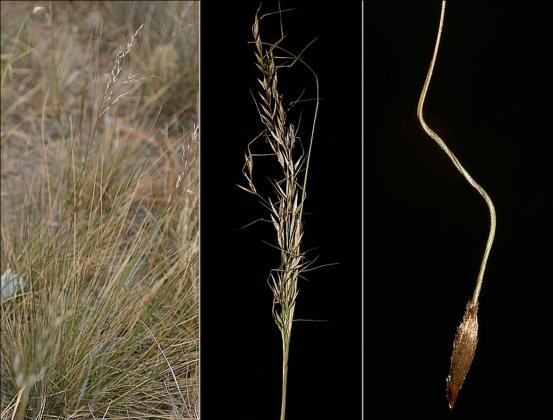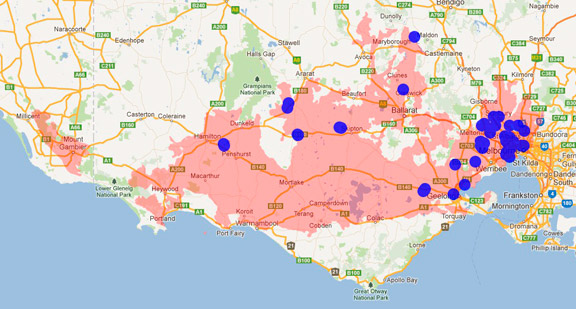A range of teacher professional learning programs will be developed to accompany the Biodiversity of the Western Volcanic Plains online outreach...

Kneed Spear-grass
Austrostipa bigeniculata
Perennial. The developing seeds are eaten by native finches and sparrows. Sheep preferentially graze on the more nutritious Kangaroo Grass Themeda triandra, leaving the tougher Spear-grasses to grow and dominate the vegetation. Mowing nature reserves, road and railside reserves can cause the same effect. The seeds of Spear-grasses have long awns (bristles) that can work their way into the skin, mouths and eyes of stock, and can also contaminate wool. Kneed Spear-grass can look very like the introduced Chilean Needle Grass Nassella neesiana and Cane Needle Grass Nassella hyalina at certain times of the year, so care must be taken not to eradicate this native grass when trying to control the noxious Needle Grass weeds.
| Details | Description |
| Type | Graminoid |
| Group | Grass |
| Identifying Characteristics | |
| Distinctive Features | The stems (culms) disintegrate after the seed heads develop. By early winter some stems start to split and fray until the stem tops are wispy tangles of fibre blowing in the wind. The seed has a 4.5-9 cm long awn (bristle) that bends twice. |
| Life Form Group | Graminoid |
| Life Form Codes | Large Tufted Graminoid (LTG) |
| EVC types | EVC 132_61: Heavier-soils Plains Grassland EVC 132_63: Low-rainfall Plains Grassland EVC 55_61: Plains Grassy Woodland EVC 55_63: Higher Rainfall Plains Grassy Woodland EVC 68: Creekline Grassy Woodland EVC 803: Plains Woodland |
| Native Status | Native to Australia |
| Taxonomy | |
| Phylum | Charophyta |
| Class | Equisetopsida |
| Order | Poales |
| Family | Poaceae |
| Genus | Austrostipa |
| Species | bigeniculata |

Distribution maps indicate current and historic locations where species have been sighted.
Source: Atlas of Living Australia
| Endangered Status | |
| DEPI Advisory List | Not listed |
| FFG Act | Not listed |
| EPBC Act | Not listed |
The conservation status of species is listed within Victoria and Australia.
The Department of Environment and Primary Industry (DEPI) Advisory List consists of non-statutory advisory lists of rare or threatened flora and fauna within Victoria.
The Flora and Fauna Guarantee Act 1988 (FFG Act) lists threatened species in Victoria. Under the Act, an Action Statement is produced for each listed species.
The Environment Protection and Biodiversity Conservation Act 1999 (EPBC Act) is the Australian Government’s key piece of environmental legislation, listing nationally threatened native species and ecological communities.



